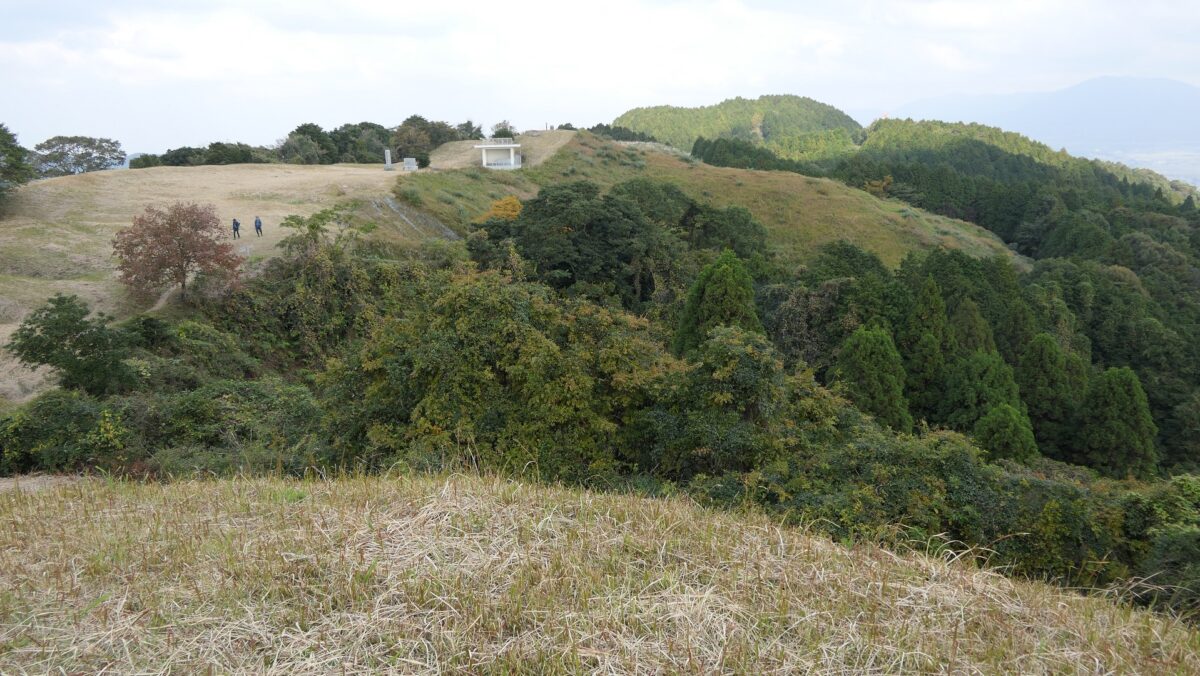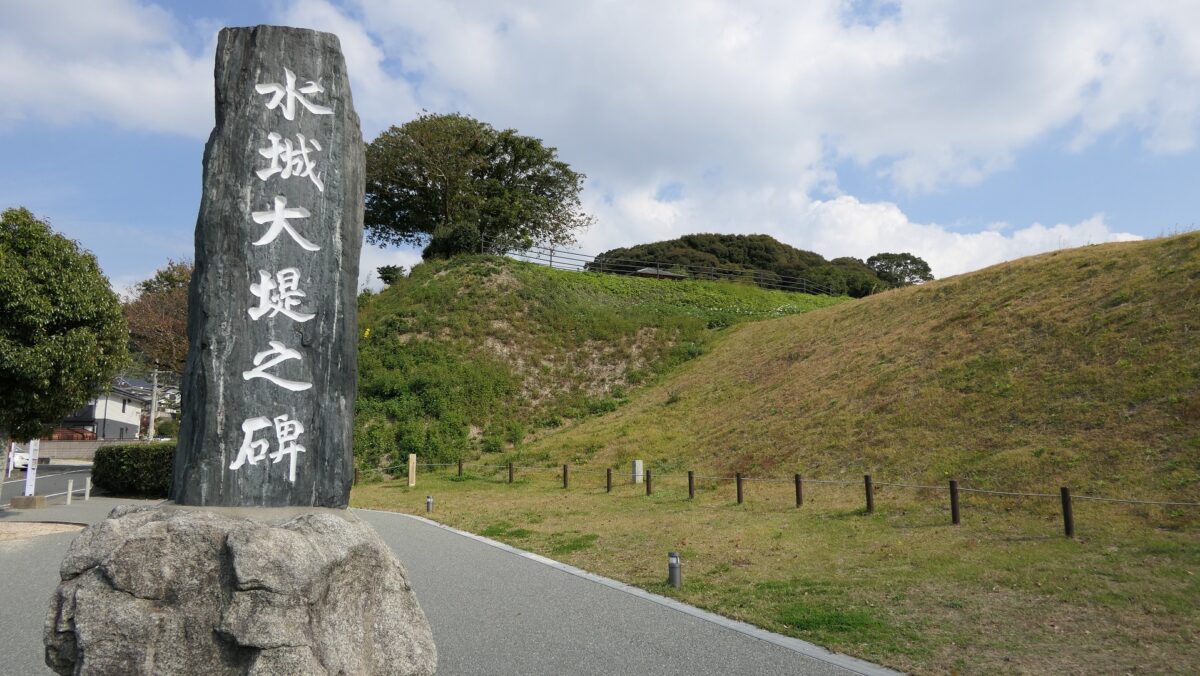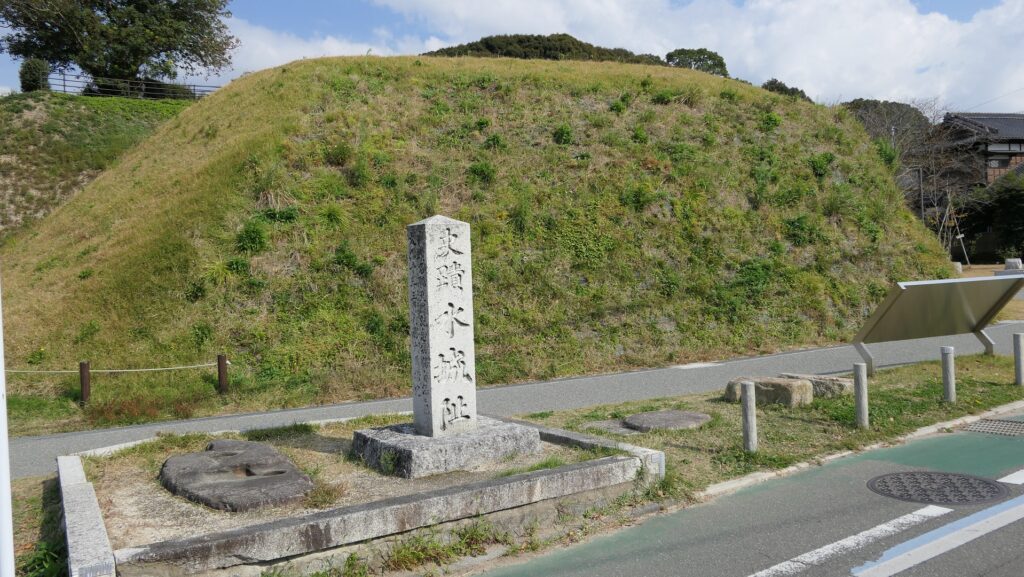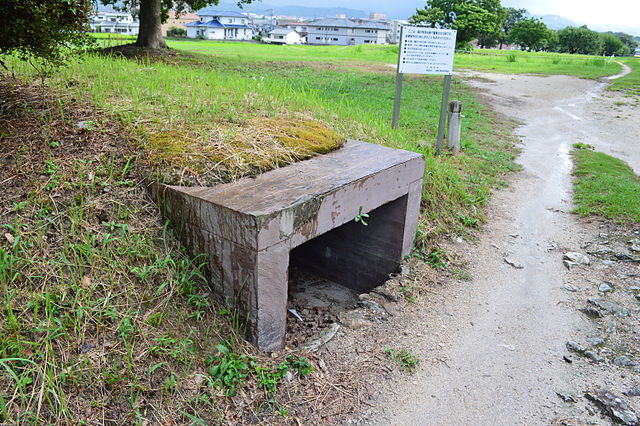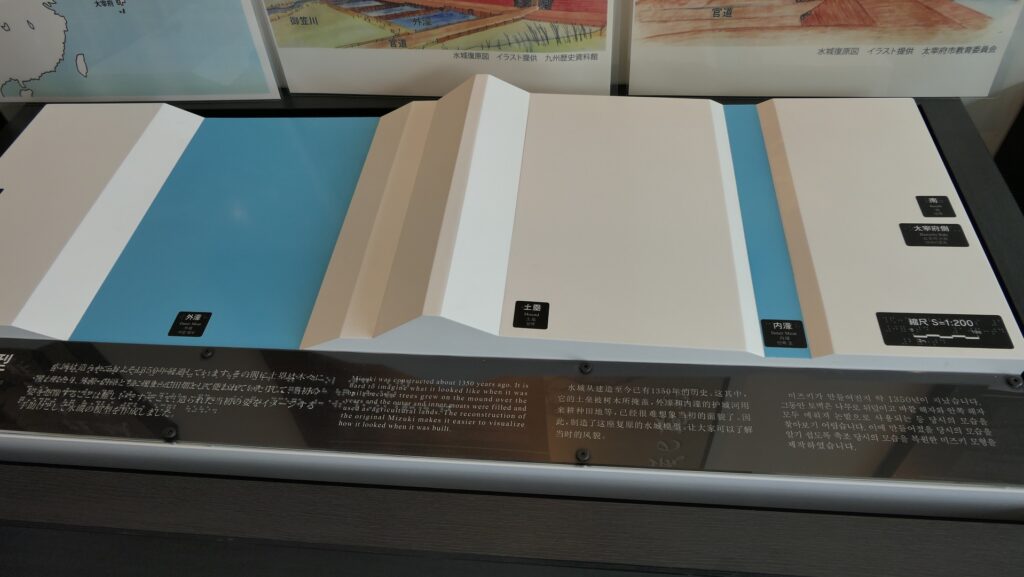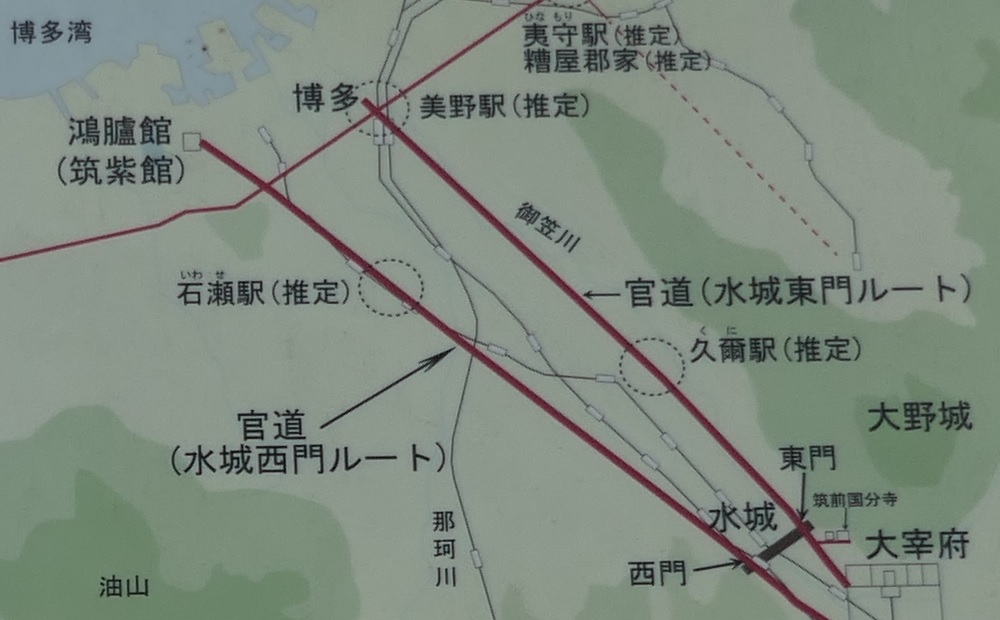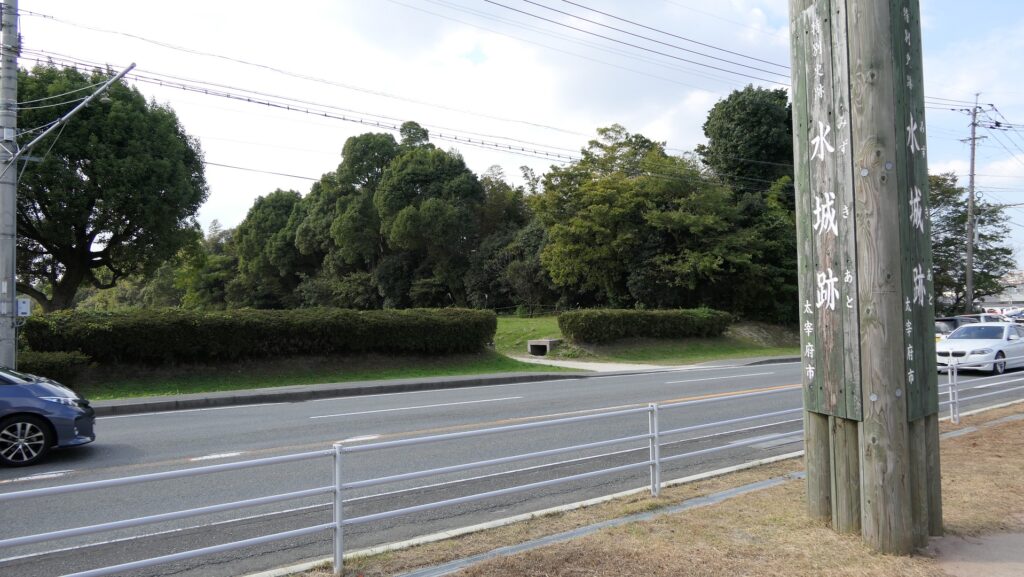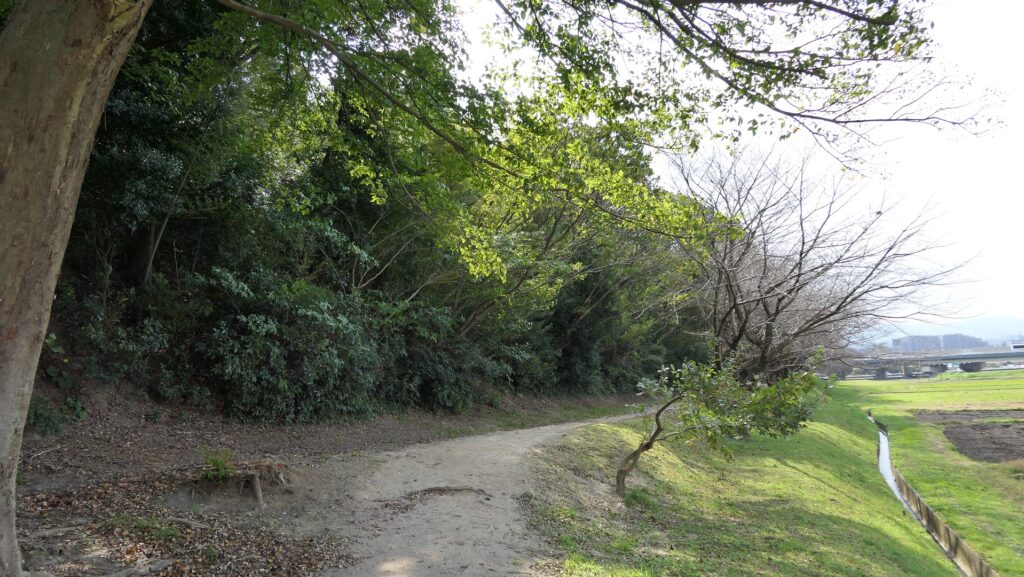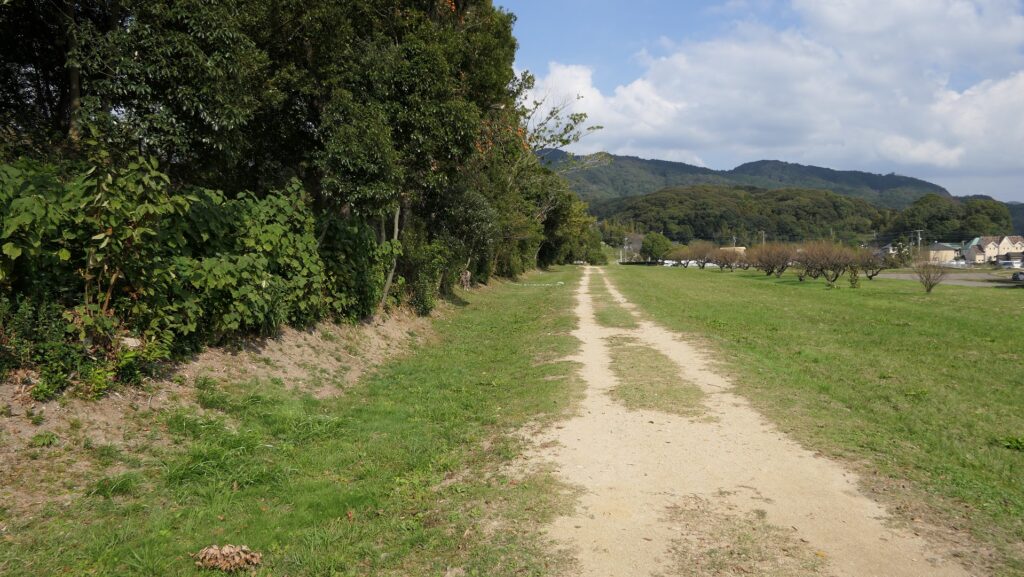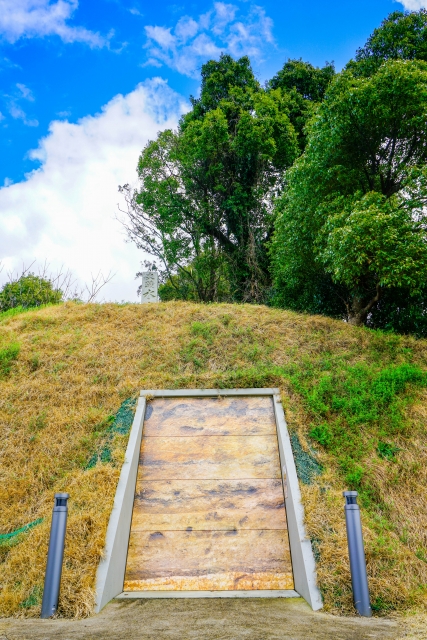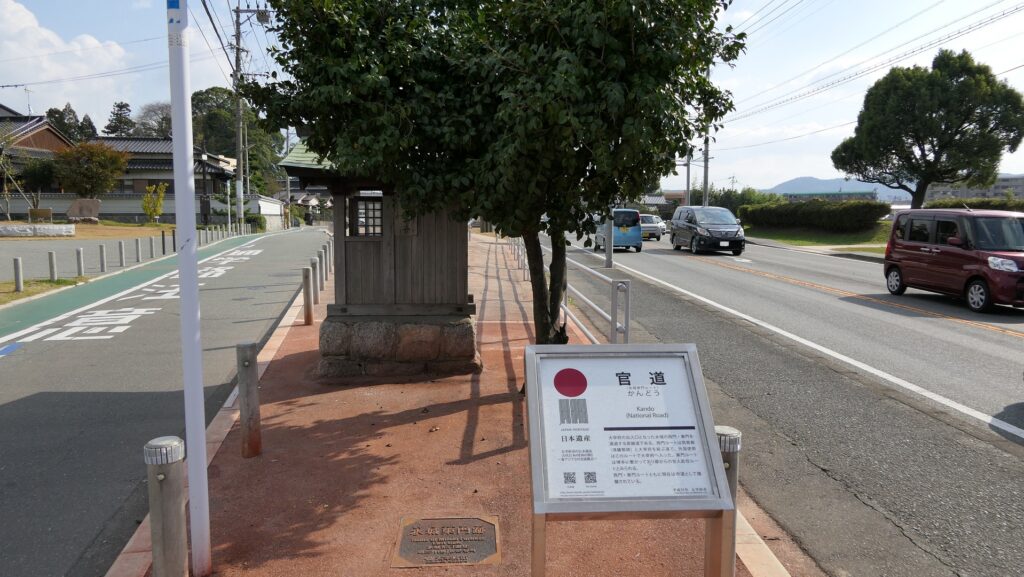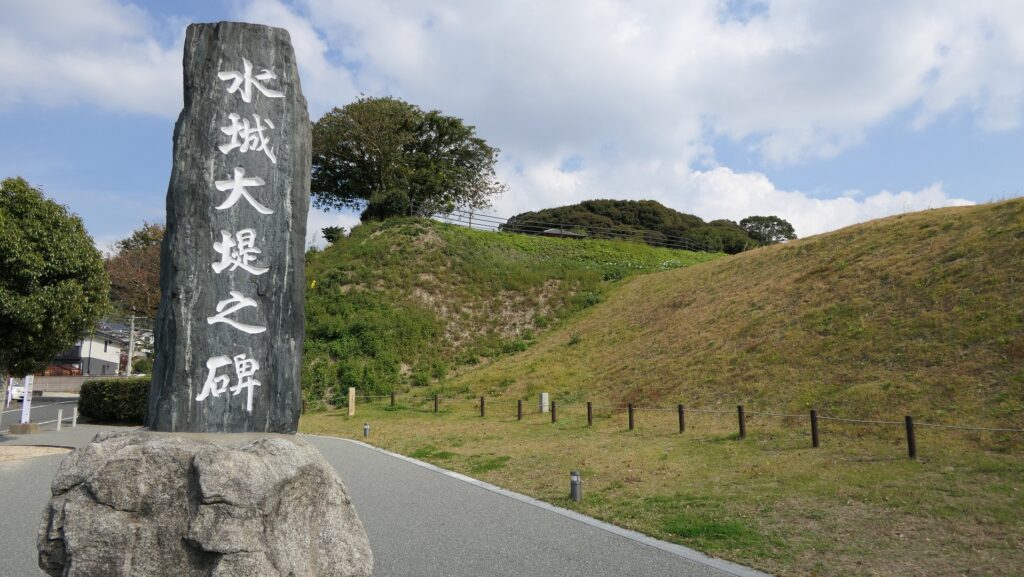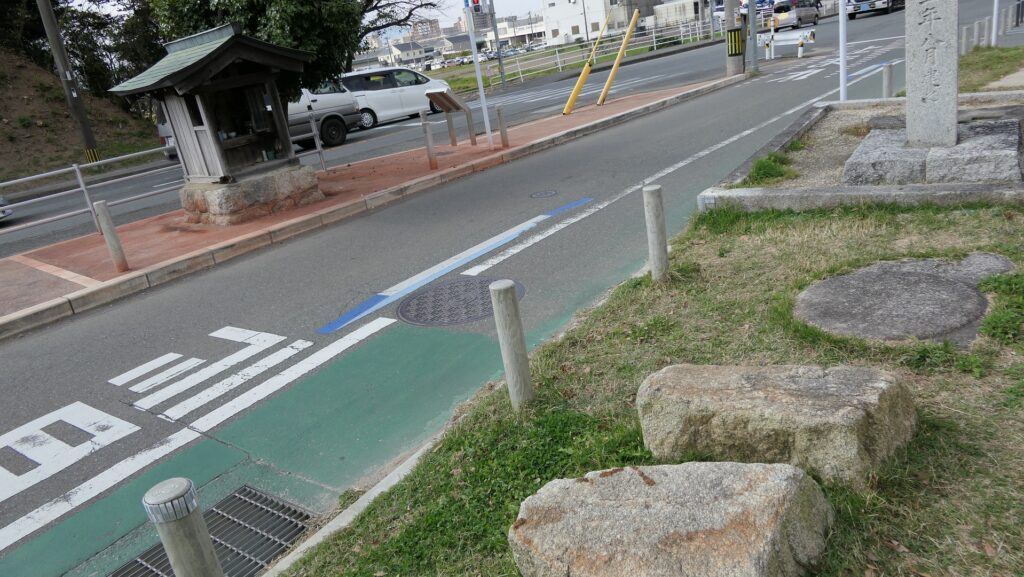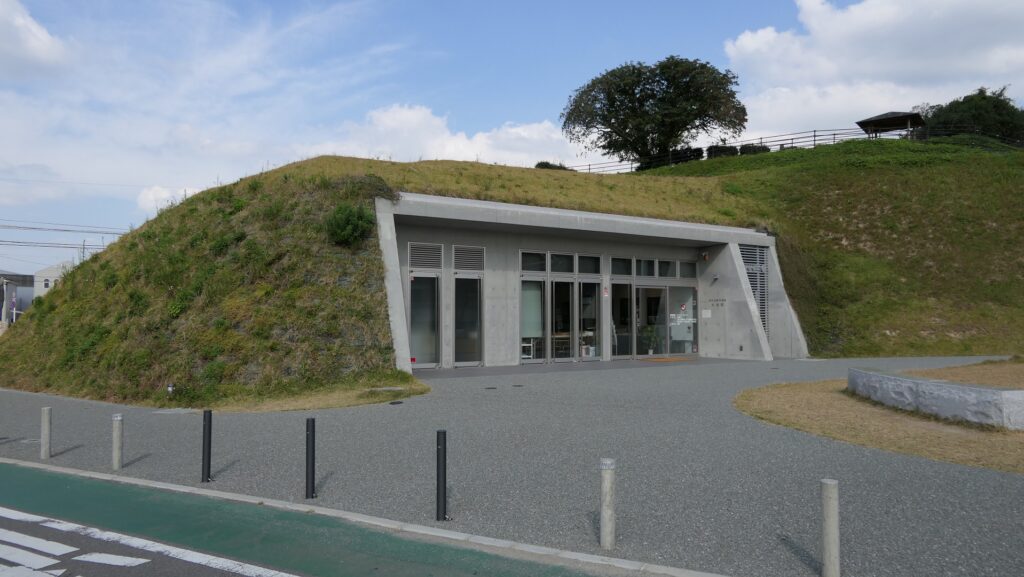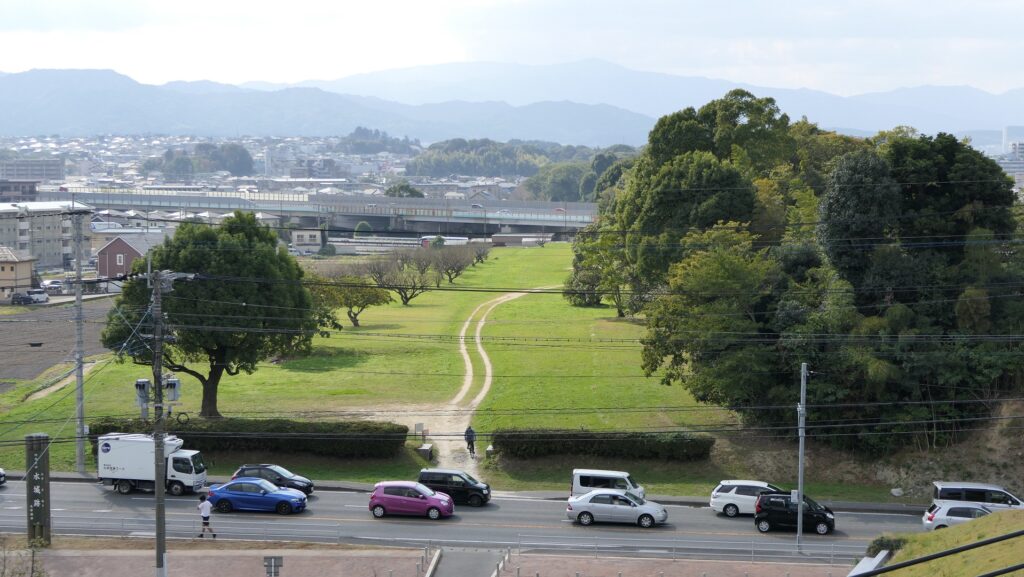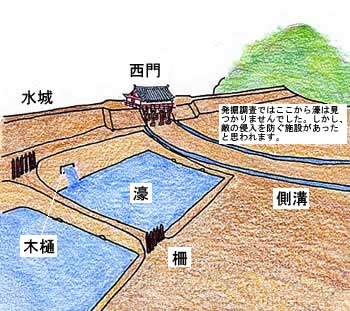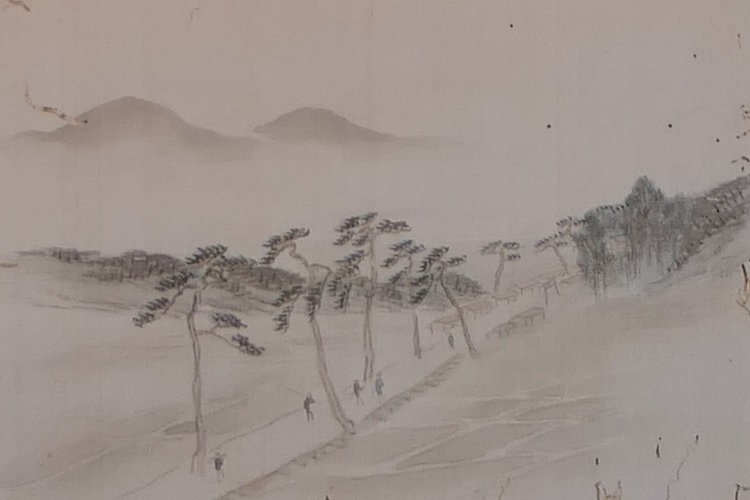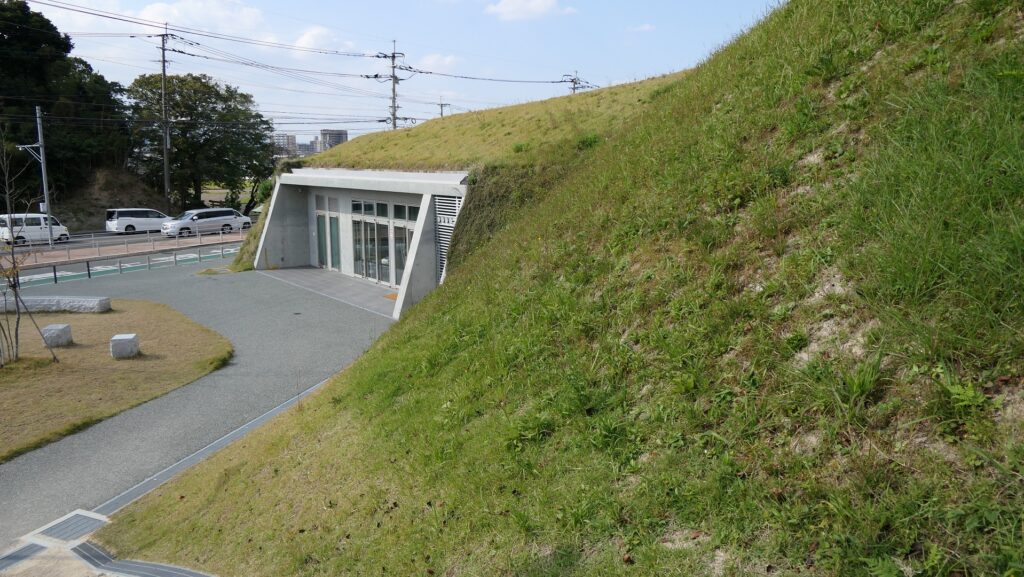立地と歴史~Location and History
古代山城の一つ~One of Ancient Mountain Castles
基肄城は、西日本にあった古代山城の一つです。663年に朝鮮で起きた白村江の戦いの後、朝廷により築かれました。日本は百済を助けようとしましたが、唐と新羅の連合軍に敗れたのです。天智天皇は、この連合軍による将来の侵攻の可能性を恐れ、百済からの難民の助けも借り、これらの城の築城を命じたのです。そのため、これらの城は「朝鮮式山城」とも呼ばれています。
Kii Castle is one of ancient mountain castles in western Japan. It was built by the Imperial Court after the Battle of Baekgang, Korea in 663. Japan tried to help Baekje, but was beaten by the ally of Tang and Silla. Emperor Tenchi, worried by the future possibility of invasion by this alliance, ordered the construction of these castles with the help of Baekje refugees. That’s why these castles are also called “Korean style mountain castles”.
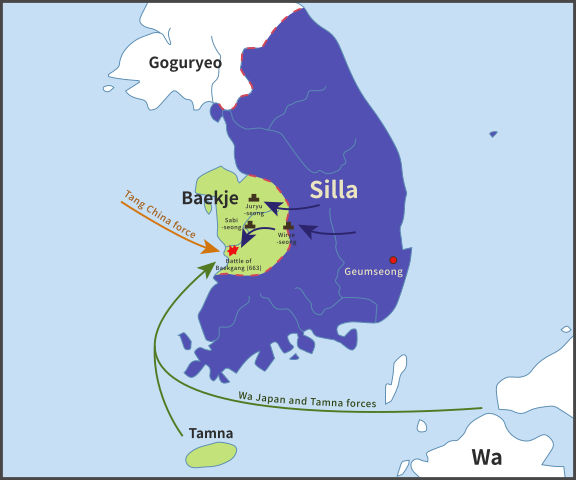
城特有の役割~Castle’s own Role
基肄城は、九州地方で記録がある五つのうちの一つです。その他は、大野、水城、麹池、そして金田です。それぞれの城には独自の役目がありました。基肄城は、物見のための城だったように思います。もし、連合軍が日本を攻めた場合、2つの考えられる侵攻ルートがありました。両方とも最初は金田城が築かれた対馬海峡にある対馬は通るでしょう。そして、壱岐島の辺りで2つに分かれることが推測され、一つは北の方角から博多湾経由で福岡平野に上陸し、もう一つは西の方角から有明湾経由で佐賀平野に上陸するものです。
Kii Castle was one of the five recorded ones in Kyushu region. The others were Ono, Mizuki, Kikuchi, and Kaneda. Each castle had its own role. I think Kii Castle was kind of a lookout castle. If the ally were to attack Japan, there would be two possible routes to enter from. Both would first pass through Tsushima Island on Tsushima Strait where Kaneda Castle was built. There are speculations that the routes may be divided around Iki Island, one would land on the Fukuoka plain through Hakata Bay from the north direction, and the other would land on the Saga plain through Ariake Bay from the west direction.
基山(標高404m)の上にあり、その頂上からは福岡、佐賀両平野が見渡せます。この城は主に佐賀の防衛の備えとされ、一方水城は福岡の方の備えとされました。基山には3つの峰(山頂、北峰、東峰)があり、南方になる谷を取り囲んでいました。それらの峰に沿って土塁が築かれ、その総延長は3.9kmありました。南側の谷には石垣が築かれ、排水口により水量を調整していました。城には4つの門があり、内側には倉庫や兵舎など多くの建物がありました。
Kii Castle was built on Kizan mountain (404m above sea level) and from its top both the Fukuoka and the Saga plains are visible. It was mainly prepared for the protection of Saga, while Mizuki was built for the protection of Fukuoka. Kizan mountain has three ridges (the top, the North Peak, and the East Peak) surrounding the valley on the south. The earthen walls were built along the ridges whose overall length was 3.9km. The stone walls were also built on the southern valley which had drains to control water. The castle had four gates and lots of buildings inside such as warehouses and barracks.
戦国時代に再利用~It was reused in Sengoku Period
古書によれば、基肄城は665年に築かれ、698年に修繕されました。結果的には連合軍は幸いにも日本を攻撃しませんでした。城の倉庫や兵舎は8、9世紀頃はで使われたとする歴史家もいます。15、16世紀頃、戦国時代として知られる時期には、その立地の良さから戦国大名によって再び城は使われました。
Old books say that Kii Castle was built in 665, and repaired in 698. As a result, the ally fortunately did not attack Japan. Some historians believe that the castle’s warehouses and barracks were used until around the 8th and 9th centuries. Around the 15th and 16th centuries which is also sometimes known as “Sengoku” Period or the Warring State Period, the castle was used again by some warlords, because of its good location.
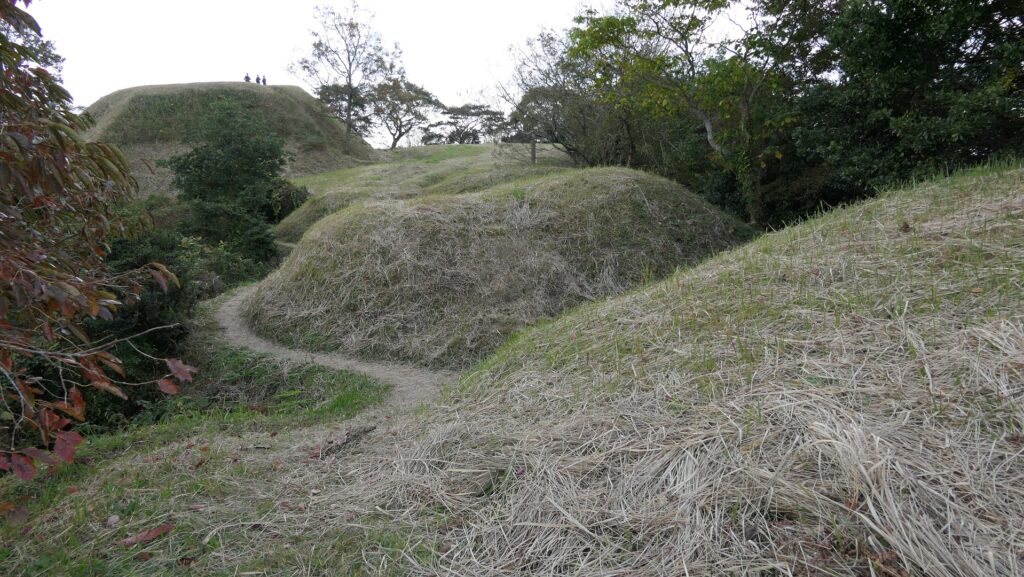
特徴~Features
現在(2021年2月)、城跡の中心部に入ることと、全体を歩き通すことはできません。2018年の西日本での豪雨によりこの辺りが深刻な被害を受けたからです。行政がこの地域の道路と山道の通行を禁止しているのです。このため、観光客は行政が許可したいくつかの地点のみ見ることができます。それでは、現在行くことができる2つの地点をご紹介しましょう。
Now (in February 2021), it is impossible for anyone to enter the center of the castle ruins, and walk straight through the whole area. This is because the area was seriously destroyed by the heavy rain in western Japan in 2018. The local government bans the use of roads and trails in that area. For this reason, visitors are able to see only some spots that the Local Government has opened. I will describe two spots you can visit now.
基山山頂~Summit of Kizan
ここは城の最高地点だった所で、土塁の西側部分に当たります。そしてまた戦国時代の城の本丸でもありました。その外側は急坂になっていて、現在ではグラススキー場のゲレンデとして使われています。山頂の麓には駐車場があり、城跡を訪れる際駐車することができます。15分程山頂の方に登っていくと、その途中に沢山の溝が見えてきます。それは何か入口のように見えるかもしれませんが、実は戦国時代の城主により作られた「いものがんぎ」と呼ばれる空堀跡なのです。
This was the highest spot of the castle and the western part of the earthen walls, as well as the Main Enclosure of the castle in Sengoku Period. The outside is steep slope, so it is now used as a grass ski ground. There is a parking lot on the foot of the summit where you can park your cars while visiting the ruins. Its 15 minutes climb to the top and on the way you will see many ditches . You may think they are some of the entrances, but they are, in fact, ruins of dry moats called “Imono-gangi”, made by the lord of the Sengoku castle.


その空堀を越えていくと、土塁の上のよく開けた場所に至ります。土塁は南北に走っています。北の方角には基肄城を示す標識があり、福岡平野を望むことができます。
Over the dry moats, you will enter the widely open area, on the earthen walls. You can see the ridge of the mountain, the earthen walls, that goes both north and south. You can also have a view of the Fukuoka plain with the signboard of Kii Castle on the north.
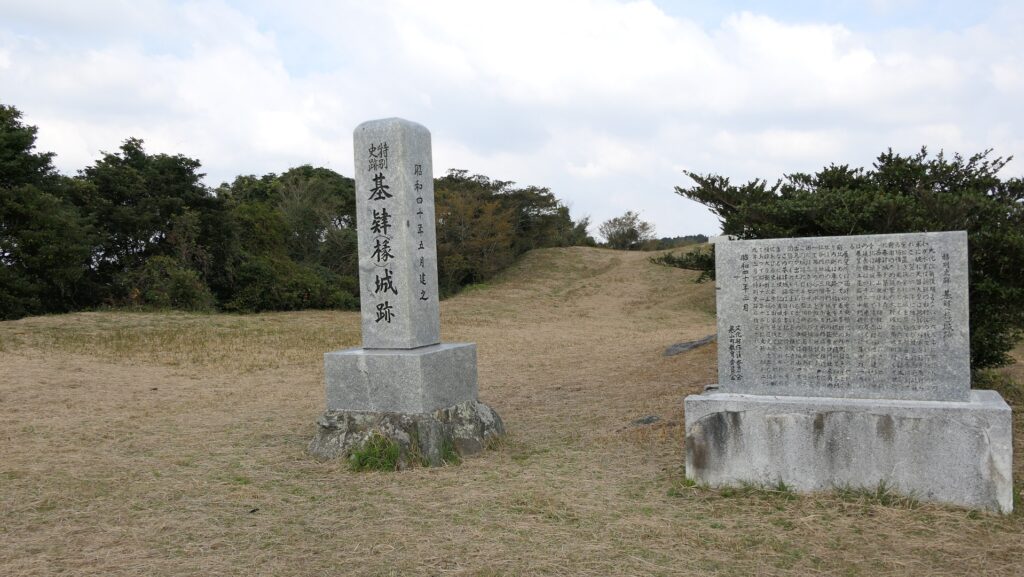
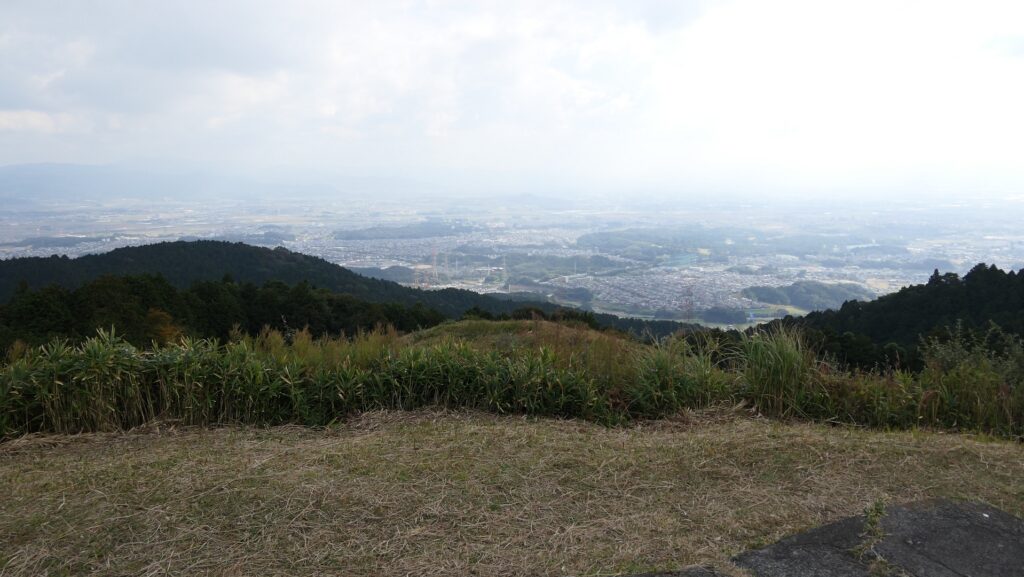
次に、反対側の南の方角に向かってみると、人工の土盛りが見えてきます。これらは戦国時代の本丸の跡なのです。この本丸は山の頂に作られたのです。もう一つ、天智天皇に関わる記念碑がここにあります。山頂からは、佐賀平野を見渡すことができます。
Next, if you go to the opposite side on the south, you can find artificial mounds, which are also the ruins of the Main Enclosure in Sengoku Period. The Enclosure is situated on the top of the mountain. There is another monument for Emperor Tenchi. You can also see the Saga plain from the top.
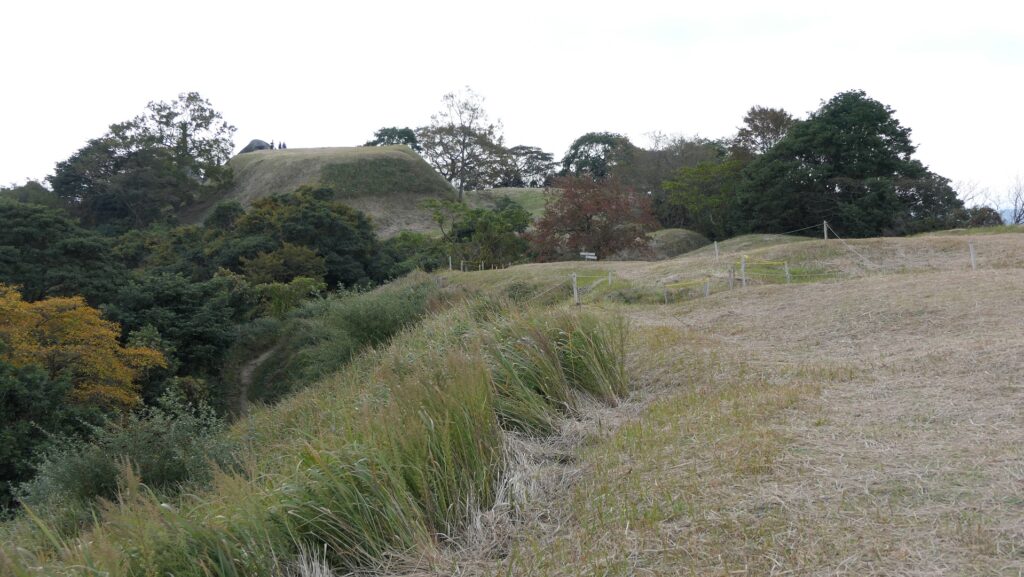
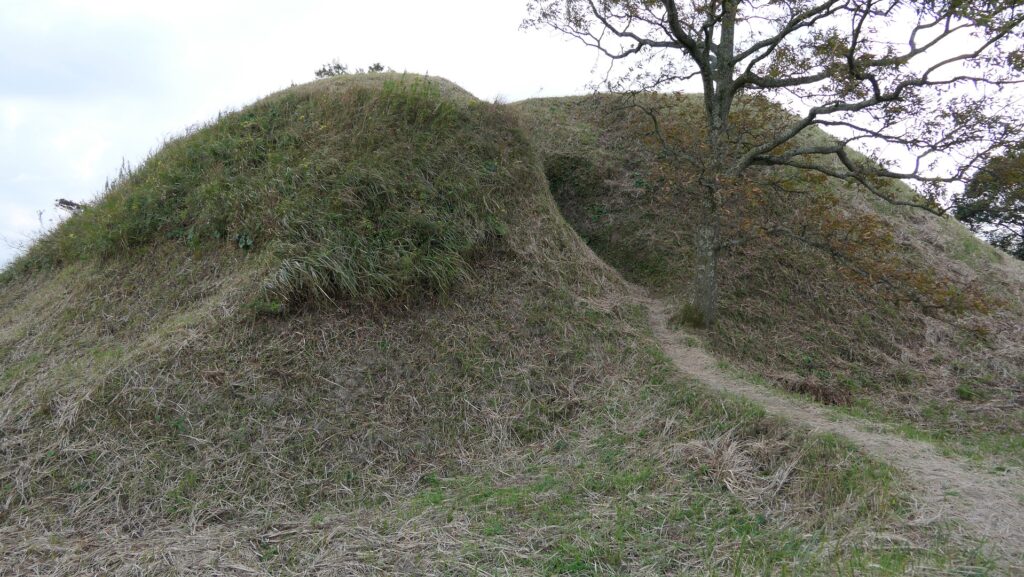
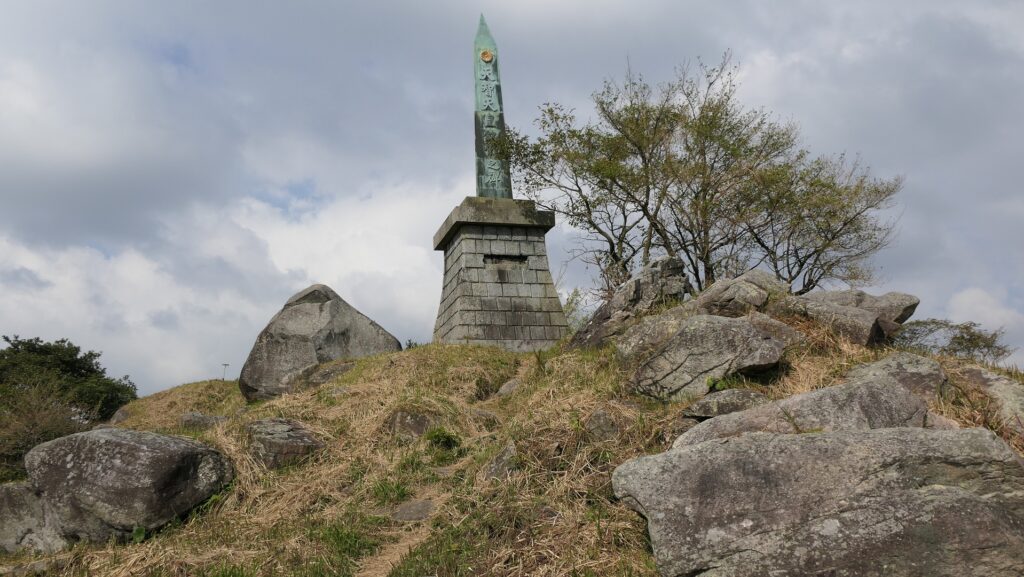

水門跡~Ruins of Water Gate
この場所は、城の南の部分に当たり、谷を埋めるため、水門と共に石垣が築かれました。石垣と水門の一部が今に残っています。ここに行くには違う道筋を進む必要があります。現存の石垣は全長26m、高さ8.5mあります。水門は石垣の下に設置され、住吉川の水を内側から外側に排出しています。
This spot was located on the southern part of the castle where the stone walls were built with the water gate to fill the valley. Part of the stone walls with the gate remain now. To visit them, you have to take a different route. The remaining stone walls are 26m long and 8.5m tall. The water gate is placed under the wall to drain the water of Sumiyoshi-gawa River from the inside to the outside.
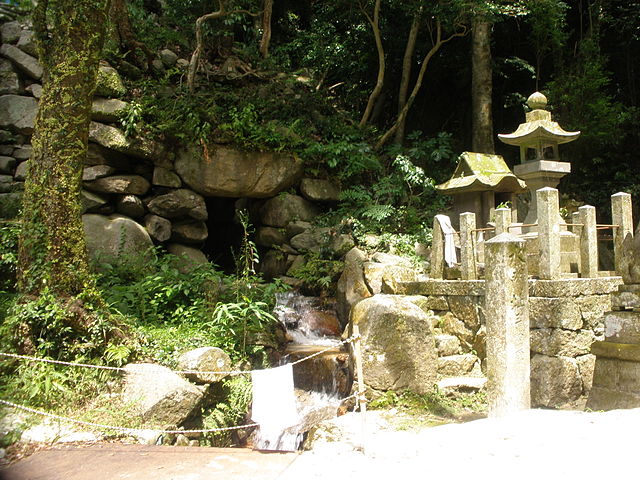
その後~Later History
江戸時代(18、19世紀頃)においてでも、人々は基肄城が古代の遺跡であることを認識していました。というのは、公式の歴史書である「日本書紀」にこの城のことが記録されていたからです。城跡は最終的に1954年に国の特別史跡に指定されました。
Even in the Edo Period (around the 18th and 19th centuries), people recognized Kii Castle as ancient ruins, because the castle have been recorded in an official history book called “Nihon-Shoki”. The ruins were finally designated as a Special National Historic Site in 1954.
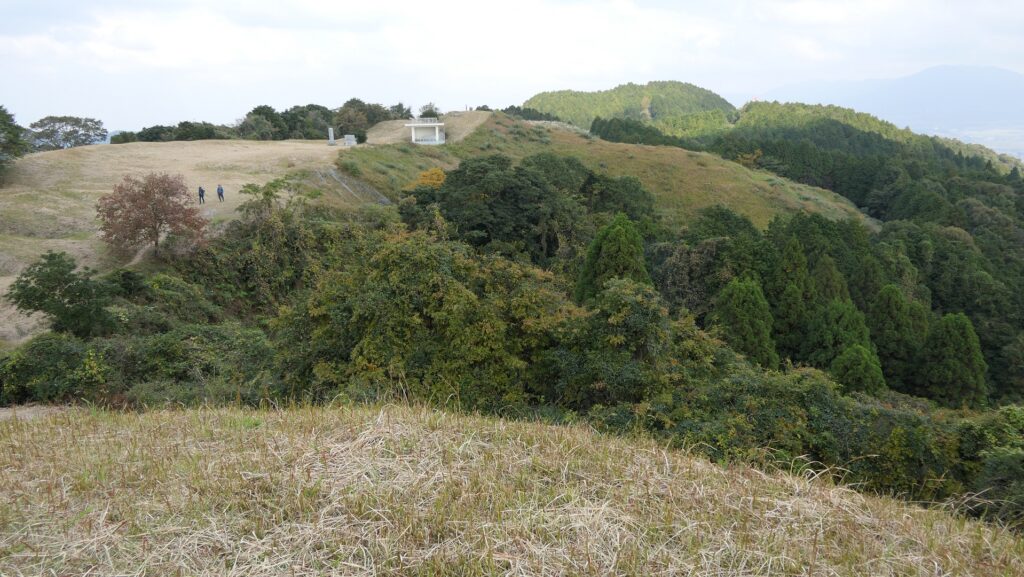
私の感想~My Impression
私が基山山頂を訪れたとき、その山頂からは福岡・佐賀両平野の素晴らしい景色が見えました。そのときこの城はとても良い立地にあることが理解できたのです。役所によると城跡の中心地の道路は2022年3月までに復旧するとのことです。その後またこの城跡を訪れてみたいと思います。
When I visited the summit of Kizan, and saw great views both of the Fukuoka and Saga plains from the top, I really found out the castle had a very good location. The local government says that the roads in the center of the ruins will be repaired by March 2022. I would like to visit them again after that.

ここに行くには~How to get There
ここには車で行くことをお勧めします。
九州自動車道の筑紫野ICから5km以内のところです。
もし基山町役場に立ち寄ることができれば、職員の方が城跡への道のりを詳しく教えてくれます。
I recommend you to go there by car at this point.
The ruins are within 5 km away from the Chikushino IC on Kyushu Expressway.
If you drop by at the Kizan Town hall, the officials will offer you the detailed routes to the ruins.
リンク、参考情報~Links and References
・基肄城跡、基山町(Kizan Town Official Website)

